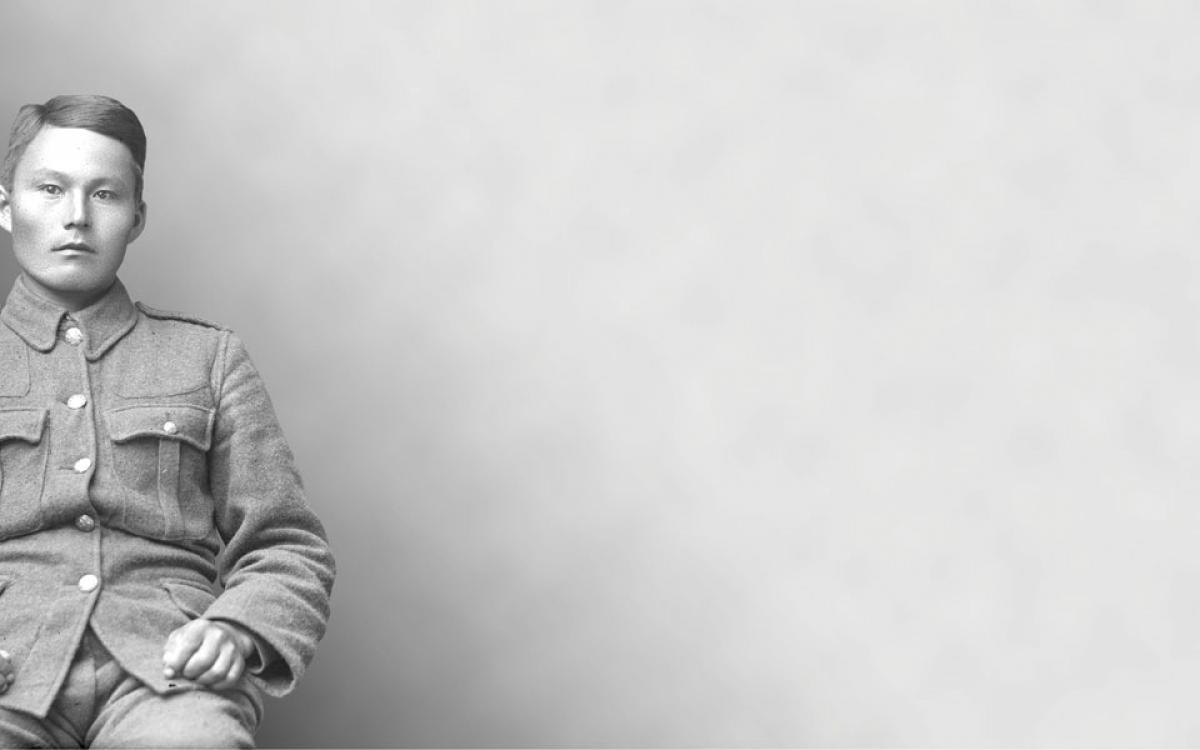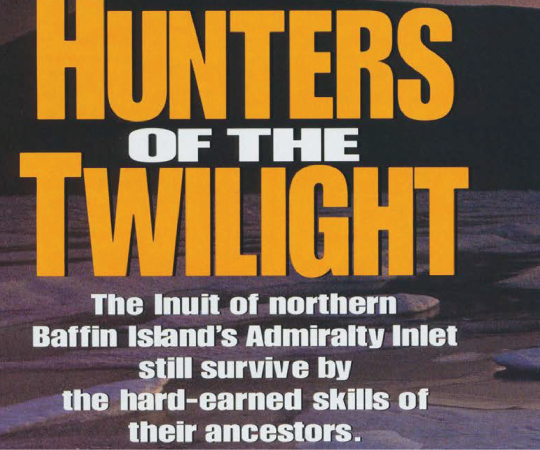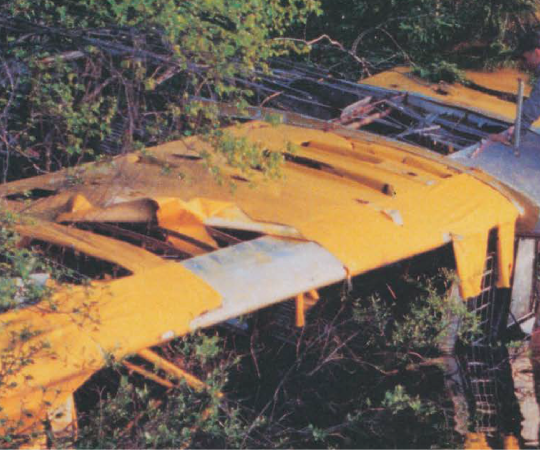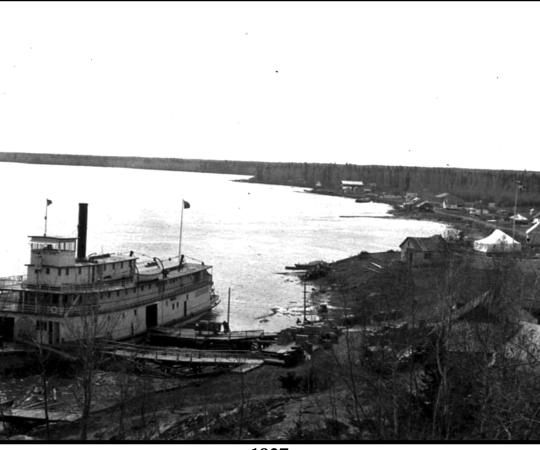Many of the men who enlisted to fight for the allied powers in World War I did so in the romantic and naïve pursuit of adventure. Few were as equipped with the skills required on the frontline as John Shiwak. A seasoned hunter and trapper from Cul-de-Sac, near Rigolet in Labrador, Shiwak arrived in France and quickly distinguished himself among his fresh-faced peers—most of whom had never shot a gun before signing on. But as anyone who spent time in the trenches would attest, no one could ever be prepared for the mental and spiritual hell awaiting them.
As a boy, Shiwak—his family name had been changed from Sikoak by a local doctor—hunted seals and ducks and ran a dog team. He left home at a young age and worked a variety of jobs, spending some winters on a trapline. In 1911, at the age of 22, he travelled to St. John’s, Newfoundland and met a writer, William Lacey Amy, who is responsible for many of the details of Shiwak’s life that survive today. The two exchanged letters in the years that followed, with Amy noting his friend’s growing interest in becoming a soldier. Shiwak did just that after war broke out in 1914 and Great Britain declared war on Germany that August—bringing Canada and the separate Dominion of Newfoundland along with it.
Shiwak arrived on the frontlines in northern France on July 24, 1916, just weeks after his Newfoundland Regiment had been all but wiped out on the first day of the Battle of the Somme. As the regiment recovered with reinforcements, Shiwak made a name for himself as a top-notch marksman and scout. He would soon be considered the best sniper in his regiment—one officer went as far as calling him the best sniper in the British army. Shiwak’s patience, discipline and accuracy owed to years of swatching seals—the practice of shooting them in open water as they came up for a breath.
Howard Lorry, a fellow Newfoundlander and member of the regiment, became friends with Shiwak, sneaking out to visit him at his sniping outpost. “He was shy and lonely, but I got to be quite friendly with him by talking of seal and duck hunting... His eyes would light up,” wrote Lorry. He noted the many notches on Shiwak’s rifle stock—“He must have killed a lot of Germans.” (Shiwak had been promoted to lance corporal within nine months.) The two men would talk for hours, Lorry wrote, with Shiwak constantly on watch. “He often sighed and said, ‘Will it ever be over?’” noted Lorry.
Following the death of two friends in April 1917, Shiwak became quieter, even despondent. He wrote letters home, pining for a woman named Louisa—most likely Louisa Flowers, with whom he was said to have been engaged. He also wrote letters to Amy, in which he longed for home, his family, to be out hunting on the ice once again.
Shiwak kept journals on the front, which included his poetry, sketches and even watercolour paintings. Sadly, none of these journals have been recovered.
After shuffling between Belgium and France—fighting in Flanders and in the Somme—with brief training reprieves, Shiwak was killed with six other men from his regiment on November 21, 1917 by a shell explosion in Masnières, France. It was a blow to morale. “His loss was keenly felt by the whole regiment as he was a great favourite with all ranks, an excellent scout and observer, and a thoroughly good and reliable fellow in every way,” his captain wrote.
Shiwak was just 28. Wrote Lorry: “I guess his spirit is back in his beloved Labrador—I would like to think so, anyway. What a change from the stillness and quiet and whiteness of Labrador to the mud and dirt and noise of Flanders.”










